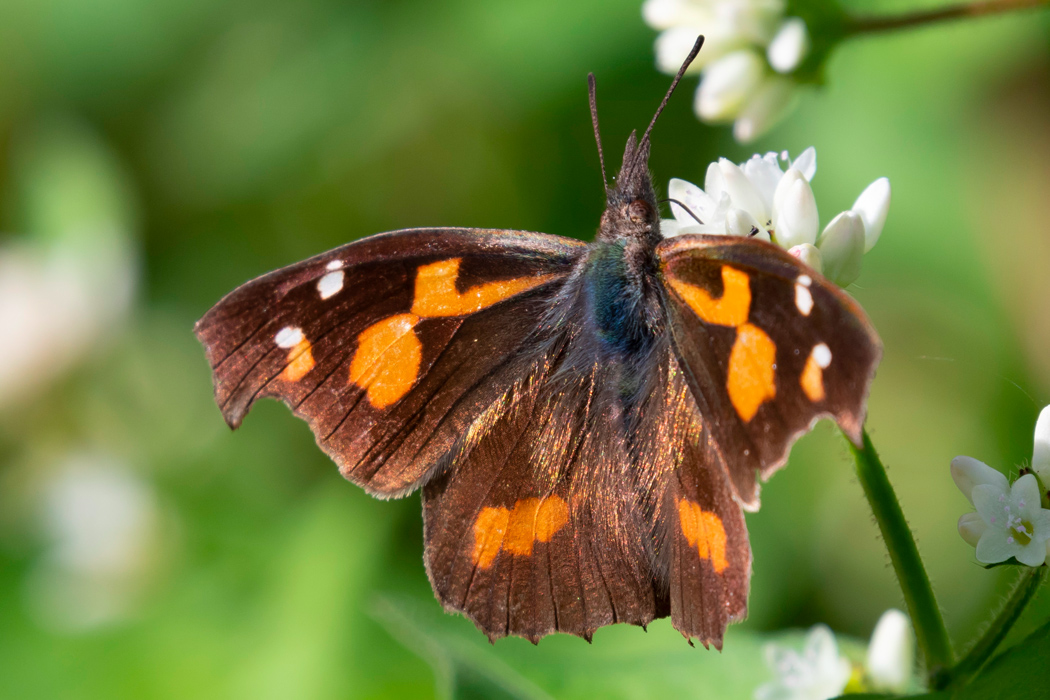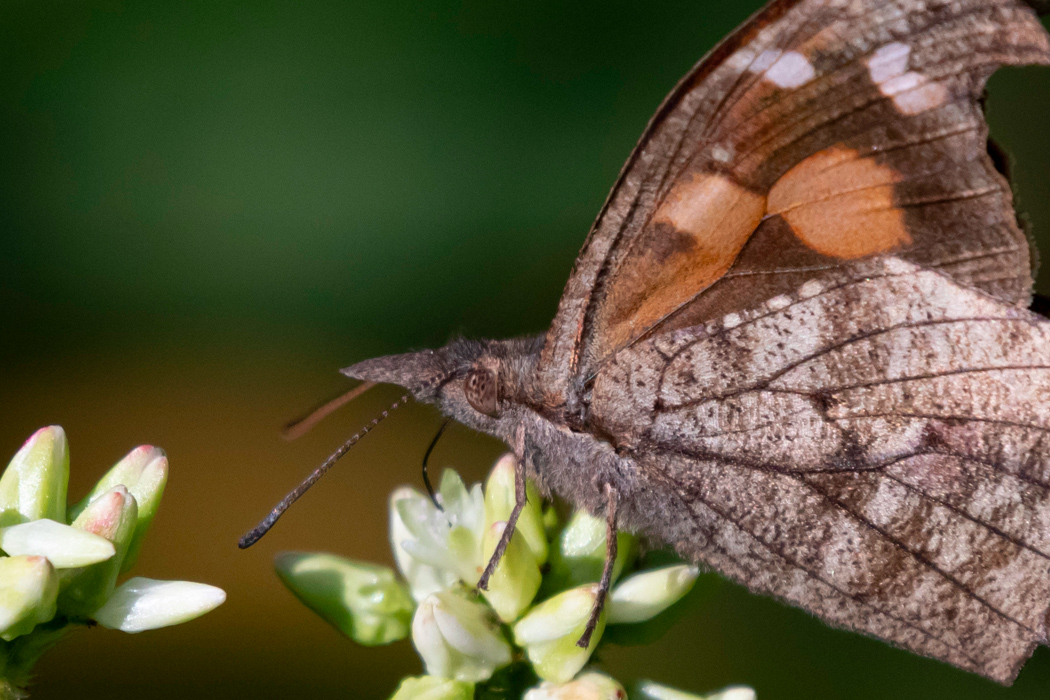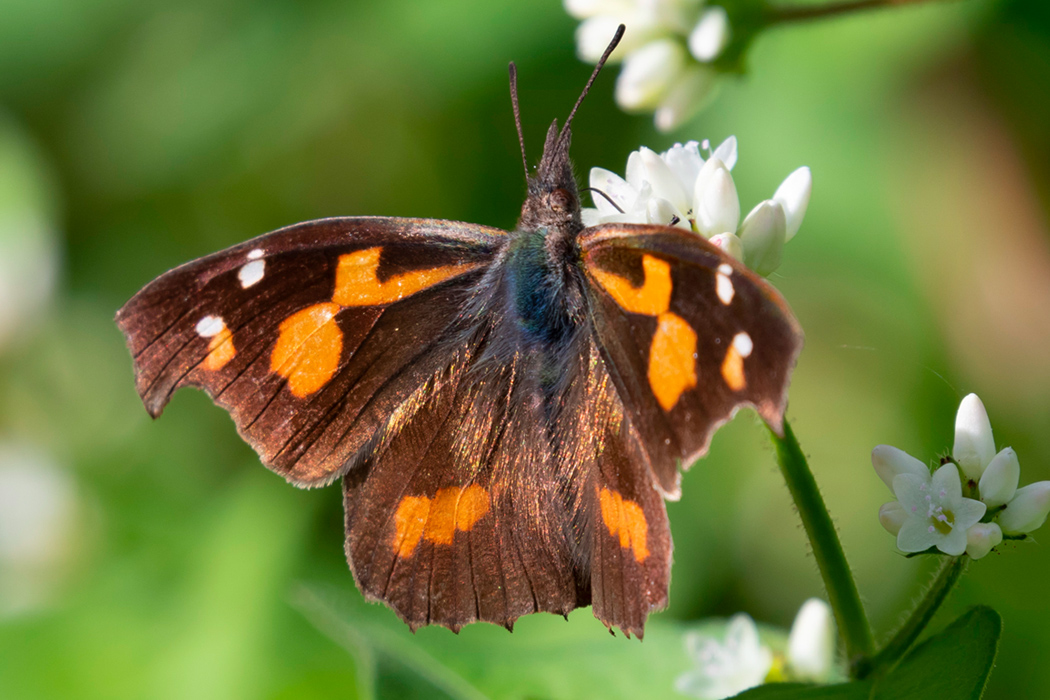
---
The tip of the face protrudes like a long-nosed goblin.
| Scientific name | Libythea celtis |
| English name | --- |
| Japanese name | 天狗蝶 |
| Classification | Insecta |
| Classification details | Lepidoptera Nymphalidae |
| Full length | 20-30mm |
| Distribution | Honshu and southwards |
Characteristics
A Nymphalidae has a long-nosed goblin-like protuberance extending forward from its head. This protrusion is an organ called palpi (lower lip) and is well developed in proboscis butterflies. The upper side of the wings is brown with orange markings, and the ends of the forewings have two white stripes. The underside of the wings is a dull brown that mimics wood.
In the past, this species was the only member of the proboscis family, but now it is considered a subfamily of the Nymphalidae family.
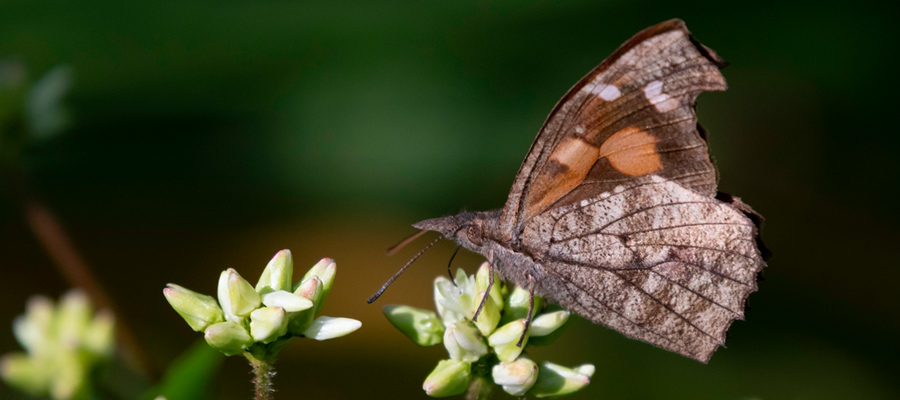
Ecology
It inhabits forests in flatlands and mountains, and occurs twice from summer to autumn. They overwinter as adults and become active again in the spring. Caterpillar-type larvae feed on hackberry leaves. Adults fly quickly to suck nectar from flowers.
Habitat
It occurred at Katakura Castle Ruins Park in Hachioji City. Katakura Castle Ruins Park has a variety of creatures depending on the environment, from the grassland at the entrance to the forest on the slopes.
This proboscis butterfly was perched on the grass near the entrance of the forest. It flew quickly from flower to flower sucking nectar. It looks different from other butterflies because of its nose-like palpi.
Pictures
Introducing a picture of ---.

Picture book
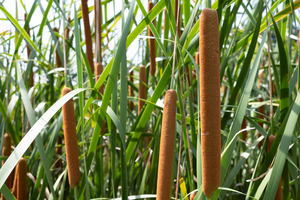
Southern Cattail
Produces brown flower spikes.......ead more.

Pellucid hawk moth
has transparent wings without scales.......ead more.

Seven-spot ladybird
Its red wings have seven spots.......ead more.

Asian Swallowtail
Common swallowtail butterfly.......ead more.
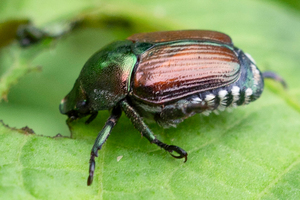
Japanese beetle
There is a white stripe along the edge of the abdomen.......ead more.
